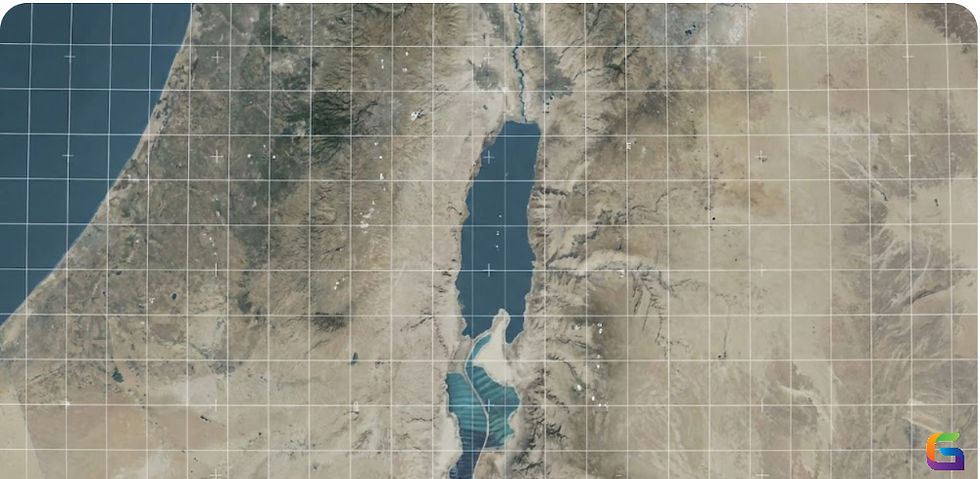LiDAR Data Collection | Exploring Different Techniques
- utkalsharma
- Mar 6, 2023
- 4 min read
Updated: May 27, 2024
LiDAR data can be collected using different methods specified below.
Airborne LiDAR
Airborne Lidar is a remote sensing technology that uses a laser scanner mounted on an aircraft or helicopter to collect data about the Earth's surface. The laser scanner emits laser beams that reflect off the ground and other surfaces, and the reflected signals are detected by the scanner. The time taken for the laser beam to travel to the ground and back to the scanner is used to calculate the distance between the scanner and the surface. The scanner records these distance measurements as a series of 3D point clouds that represent the shape and elevation of the Earth's surface.
Airborne Lidar is widely used in various applications, such as mapping and surveying, forestry management, geology, archaeology, urban planning, and disaster management. The advantage of airborne Lidar is that it can rapidly collect highly accurate 3D data over large areas, even in areas with rugged terrain or dense vegetation cover. Additionally, the data collected can be used to create high-resolution digital elevation models, 3D models, and maps, which can be used for analysis and visualization purposes.
Terrestrial LiDAR
Terrestrial LiDAR is a remote sensing technology used to collect highly accurate and detailed three-dimensional data from terrestrial environments. It works by emitting laser pulses at a target and then measuring the time it takes for the pulses to bounce back to the scanner, which allows the system to calculate the distance between the scanner and the target.
Terrestrial LiDAR scanners typically consist of a laser emitter and receiver mounted on a tripod, as well as a rotating mirror that directs the laser beam across the target area. The laser pulses are emitted at a high frequency (typically between 100,000 and 2 million pulses per second), and the reflected signals are captured by the receiver.
The resulting data can be used to create highly detailed 3D models of buildings, landscapes, and other features of the environment. This can be useful in a variety of applications, such as urban planning, archaeology, forestry, and civil engineering.
Terrestrial LiDAR is distinct from other LiDAR technologies such as airborne LiDAR, which is mounted on an aircraft and used to survey larger areas from above.
Bathymetric LiDAR
Bathymetric LiDAR is a remote sensing technology that uses LiDAR to measure the depth of water and create three-dimensional maps of underwater terrain. It works by emitting laser pulses towards the water surface and measuring the time it takes for the pulses to reflect back from the water surface and seafloor.
Bathymetric LiDAR uses two laser systems: one to measure the distance from the aircraft to the water surface and another to measure the distance from the water surface to the seafloor. By subtracting the two distances, the system can determine the depth of the water at each point.
Bathymetric LiDAR is often used for mapping shallow coastal areas, rivers, lakes, and estuaries. It can be used to create highly detailed and accurate bathymetric maps of underwater terrain, which are useful in a variety of applications, including navigation, marine habitat mapping, coastal erosion studies, and offshore wind farm planning.
One of the advantages of bathymetric LiDAR over traditional survey methods, such as sonar or echo sounders, is its ability to capture detailed data on both the underwater terrain and the surrounding coastline or land surface, providing a more complete picture of the environment.
UAV LiDAR
UAV or drone-based Lidar is gaining popularity due to its ability to collect Lidar data in hard-to-reach or dangerous areas, such as mountains, cliffs, and building facades. UAV Lidar involves mounting a Lidar sensor on a drone, which collects data by flying over the area of interest. UAV LiDAR is a remote sensing technology that uses LiDAR mounted on a UAV or drone, to collect high-resolution three-dimensional data of an area. The system works similarly to terrestrial LiDAR, but with the added advantage of being able to collect data from difficult-to-reach or hazardous locations.
UAV LiDAR uses a laser scanner mounted on the drone to emit laser pulses toward the ground. The laser beams reflect off the terrain, and the reflected signals are captured by a receiver on the UAV. By calculating the time it takes for the laser pulses to bounce back, the system can determine the distance between the UAV and the ground surface.
UAV LiDAR can be used for a variety of applications, including mapping and surveying, environmental monitoring, and infrastructure inspection. The high-resolution data collected by UAV LiDAR can be used to create accurate 3D models of an area, which can be used for urban planning, construction, and resource management.
One of the advantages of UAV LiDAR over traditional survey methods is its ability to collect data quickly and efficiently over large areas, with less manual labor and at a lower cost. Additionally, the ability to collect data from above allows for a more complete and accurate representation of the terrain and infrastructure.
For more information, please feel free to reach us at:
Email: info@geowgs84.com
USA (HQ): (720) 702–4849
India: 98260-76466 - Pradeep Shrivastava
Canada: (519) 590 9999
Mexico: 55 5941 3755
UK & Spain: +44 12358 56710








Comments